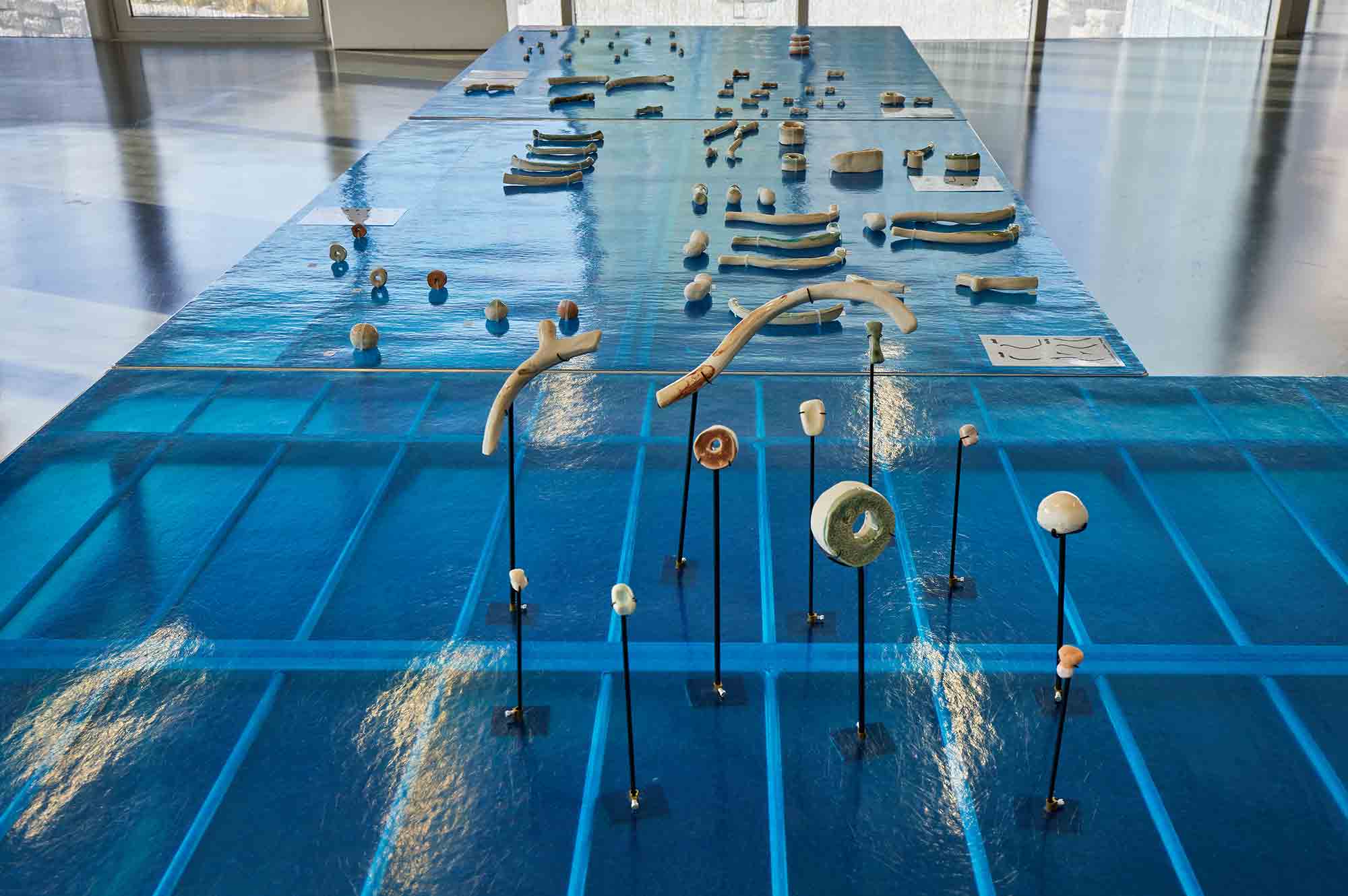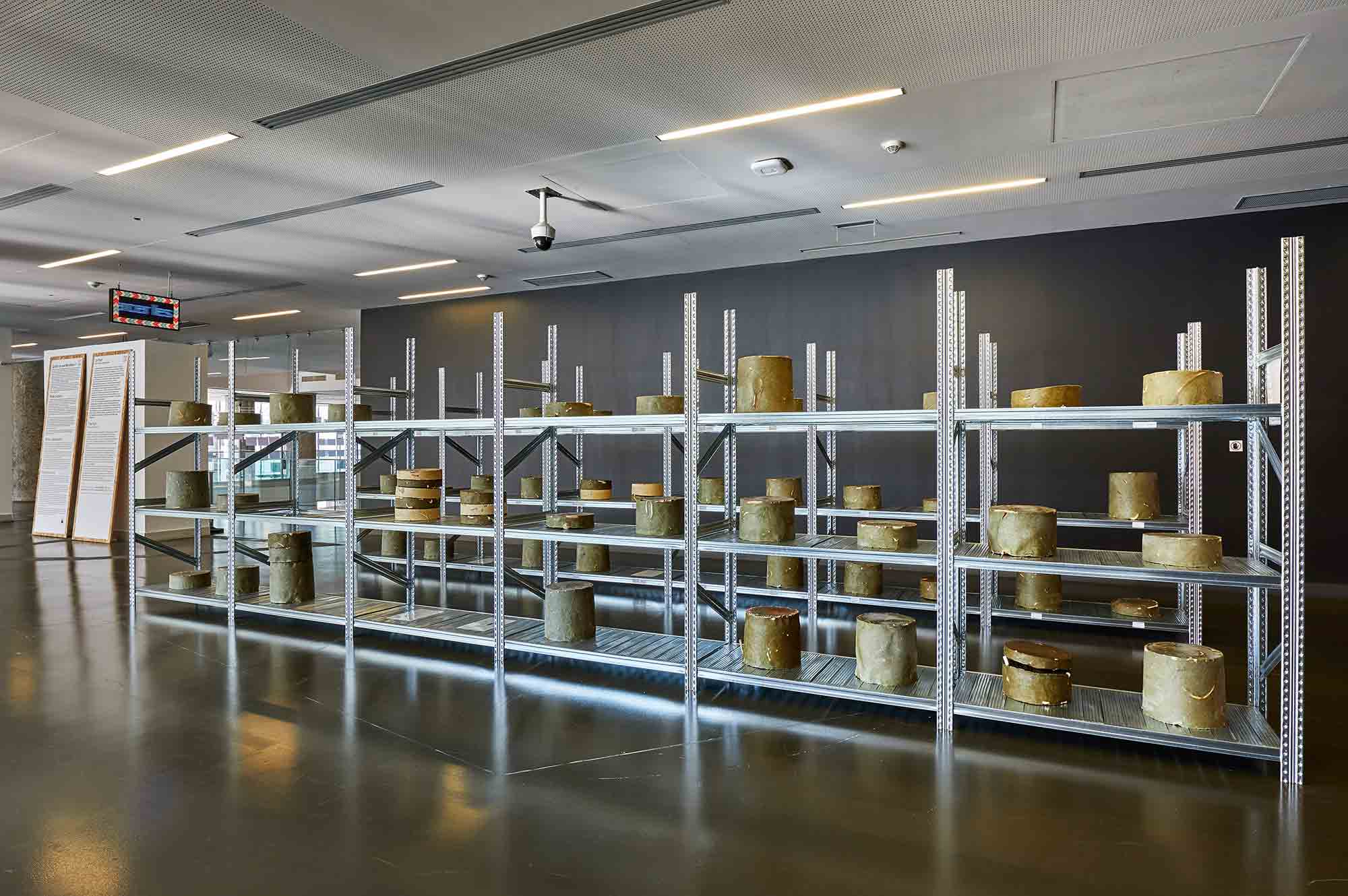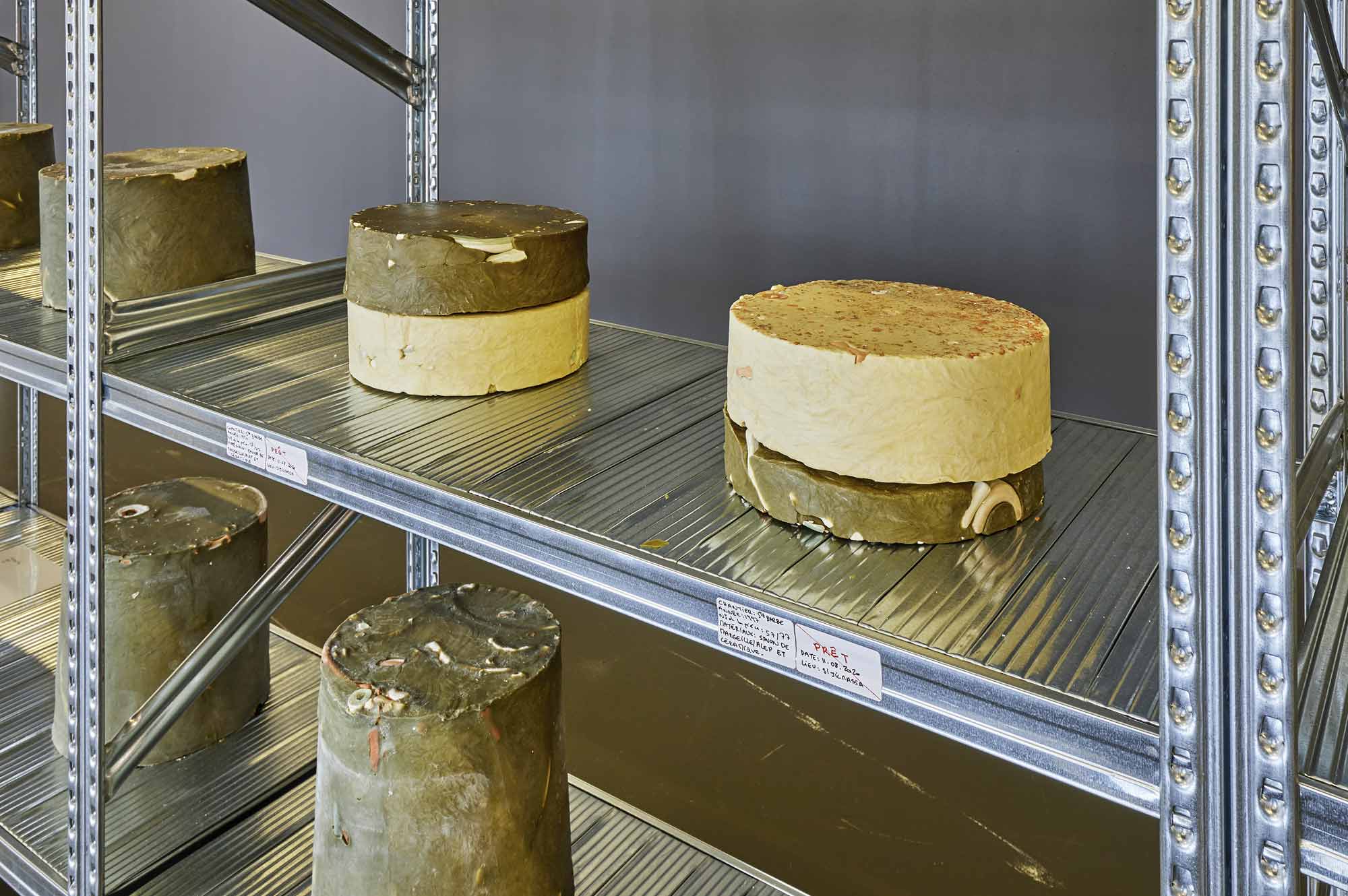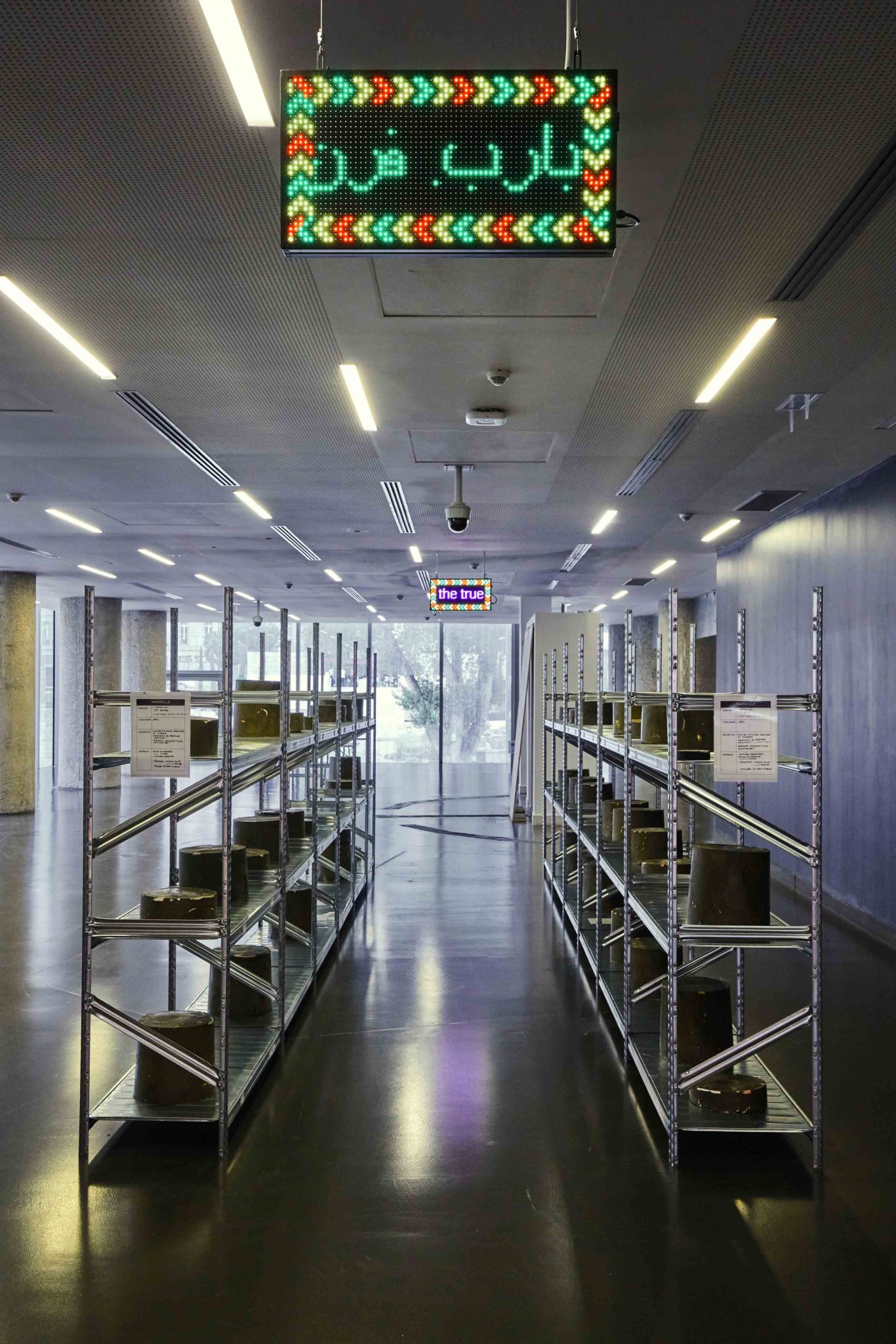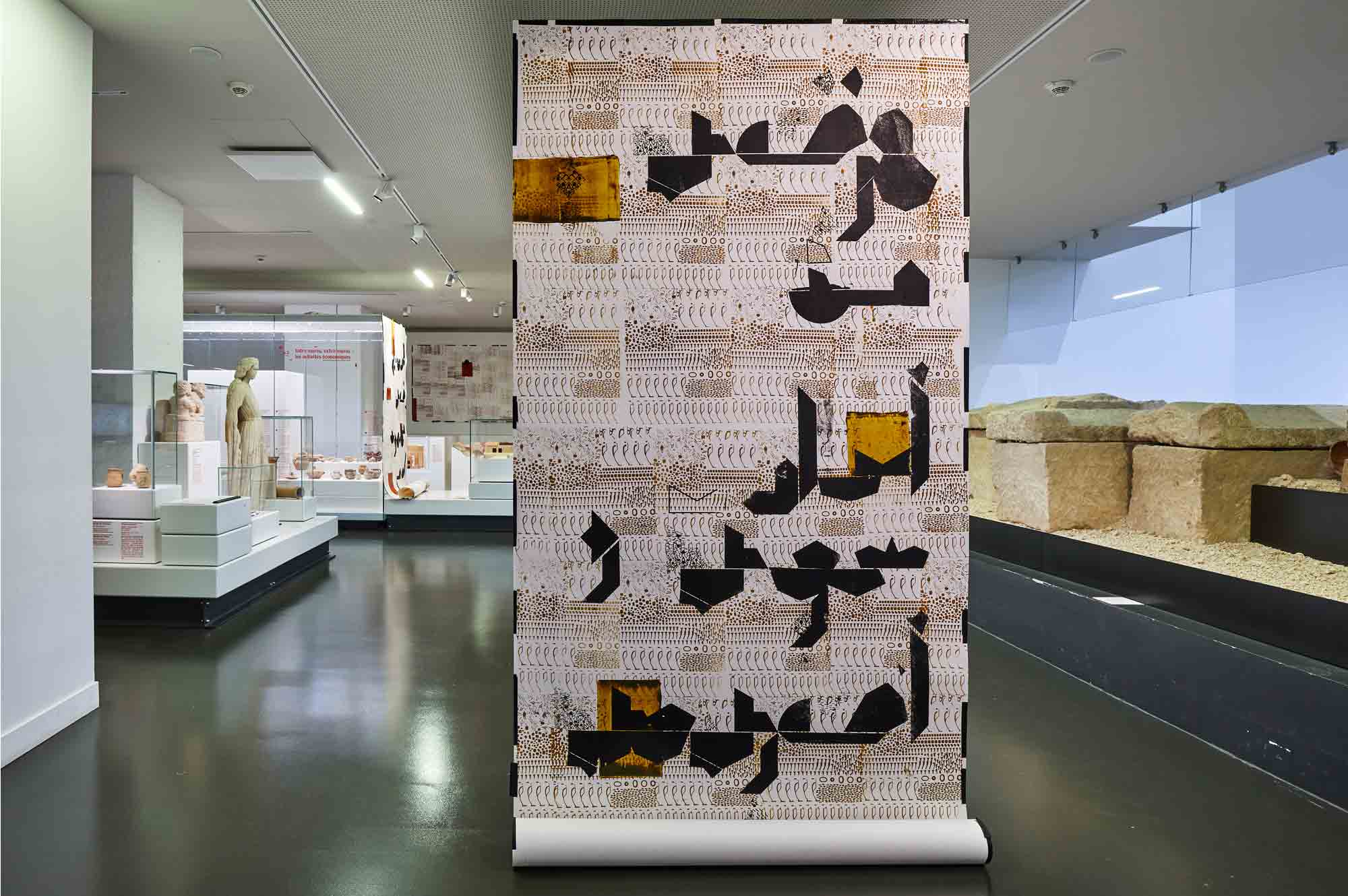Born in France (1986) to a traditional Moroccan family, Sara Ouhaddou’s work is informed by the experience of growing up between cultures. She began her career as a fashion designer but eventually shifted toward a more artistic and social approach. Her work specifically addresses the diverse challenges facing the artisan community in Morocco, while generally questioning the availability of art as a tool for economic, social and cultural development in the Arab world. At the same time, her characteristic combination of traditional Moroccan art forms with contemporary artistic practices reframes forgotten cultural realities.
In 2019 she was resident at FRAEME (La Friche la Belle de Mai, Marseille) for four months, where she continued her research on the history of alphabets, which reveals the development of civilisations as well as their erasure. By exploring Marseille’s history through unknown passages and objects found in local archaeological excavations, she further unravels the city’s complex, and at times competing, narratives.
Sara Ouhaddou, I Give You Back What’s Mine / You Give Me Back What’s Yours, 2020
Archives shelves, ceramic, soap, folding tables
Commissioned by Manifesta 13 Marseille
Produced in collaboration with Musée d’Histoire de Marseille, Savonnerie du Fer à Cheval and Triangle France – Astérides
Céramique : Cérafine Limoge
Supported by Ammodo and Drosos Foundation
Courtesy of the artist
At the Musée d’Histoire de Marseille, Sara Ouhaddou displays strange objects, straight out of an archaeological excavation never seen before by the city’s inhabitants. On the shelves of this fictitious storage space, mysteriously moved to the entrance of the museum, where the shopping centre ends, visitors can discover the remains of what seems to be one of the oldest architectural forms shared by many civilisations: the column. However, a closer look reveals strange anomalies: made of Marseille soap, a direct descendant of Aleppo soap, their material evolves; foreign bodies, ceramic bones from the excavated objects, appear stuck there. These columns, both organic and mineral, are made of the knowledge exchanged in the Middle Ages between the Arab-Andalusian world and Marseille, and bear witness to the artist’s interest in unknown stories that create doubts in History.
Further on, the fragments that one could barely guess at, are arranged on what seems to be both a market stall and an archaeologist’s work table. At the border of the museum, the archaeological reserve, the city centre and the mall, the artist reaffirms the moving dimension of History and its writing, questioning the choices of our predecessors.
Thus, fascinated by this place as much dedicated to History as to the production of knowledge and objects, Sara Ouhaddou proposes a work researched, produced and exhibited at the Musée d’Histoire de Marseille, which she perceives as a place made of paradoxes and parallels. The work thus questions the hybridisation of knowledge and its forms, but also that of the institutions that preserve it and display it. Here in Marseille, between the Musée d’Histoire de Marseille and the shopping centre, the walls are porous.
Sara Ouhaddou, Kiln with Islamic Technology – Ceramic with Oriental and African Origins – Production of Red Clay, 2020
Screenprints
Commissioned by Manifesta 13 Marseille
Produced in collaboration with Musée d’Histoire de Marseille and Triangle France – Astérides
Supported by Ammodo and Drosos Foundation
Courtesy of the artist
If you have followed the illuminated panels with a quasi-promotional purpose, placed at the entrance to the Museum by the artist Sara Ouhaddou, you will now discover the section dedicated to the Oven of Sainte Barbe, an oven with Arab-Andalusian technology dating from the 13th century and found not far away, in the Carmelite Hill. Its presence, its history and its museographic treatment are the starting points of the project that the artist has been developing in Marseille for over a year. The oven itself, as well as its presence in the museum and its position, nestled between a shopping centre and an archaeological site, show the history of civilisations at the heart of the symbol of modern consumerism.
Ancestral methods of manufacture meet mass industrial production. Starting from the history of the oven of Sainte-Barbe, Ouhaddou takes us on a journey through her thoughts on the choice of the stories told and their development, the heritage of one of the first tools for the industrial production of crockery and everyday objects, the physical limits of matter and the experimental dimension in the transmission of knowledge.
By using the terminology used for some of the objects presented, the artist questions the choice of their names by making large silk-screen prints in which the alphabets are mixed together to create a new and unique language. She covers the showcases, proposing an alternative, interrogative definition that is open to visitors’ interpretations.
* Work conceived for the occasion of Manifesta 13 Marseille
Produced in collaboration with Triangle France – Astérides
Watch the Interview of artist Sara Ouhaddou HERE
Samia Henni*,Sara Ouhaddou*
11.09 - 29.11.2020 Rencontres: Méditerranée, traits d'union?
Samia Henni*,Sara Ouhaddou*
14.09 - 16.09.2020









